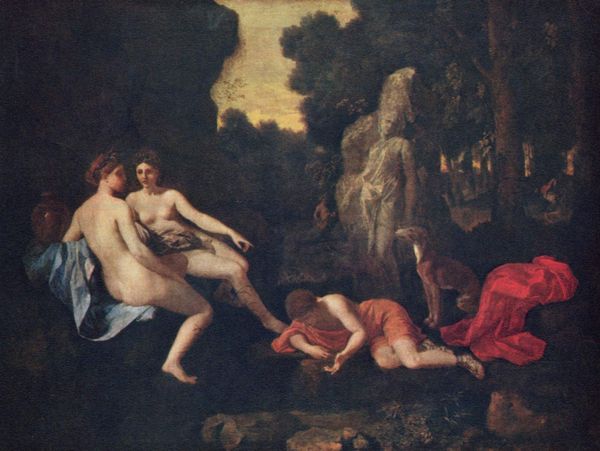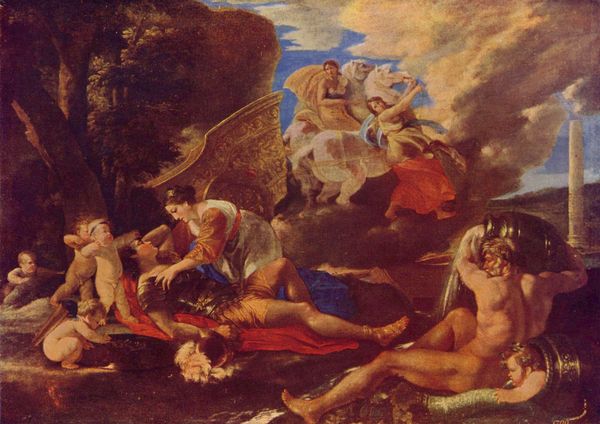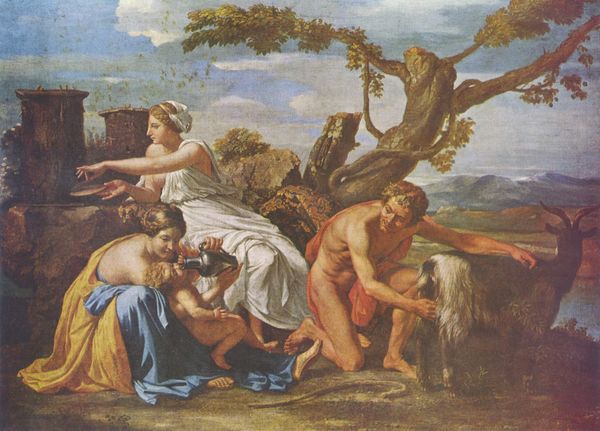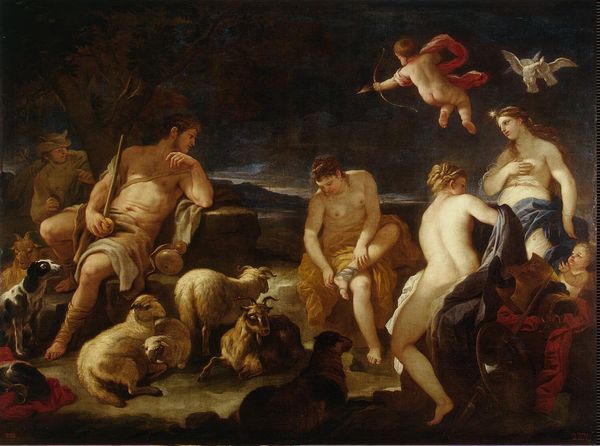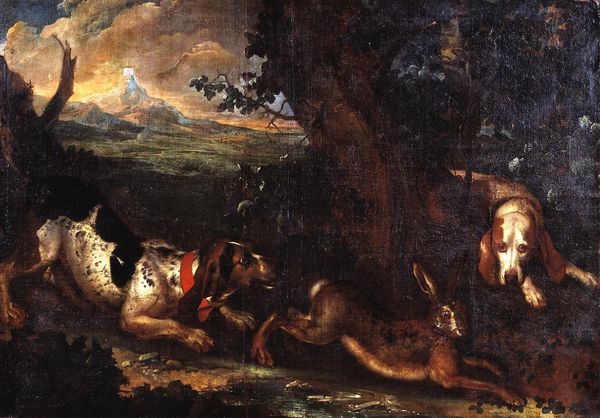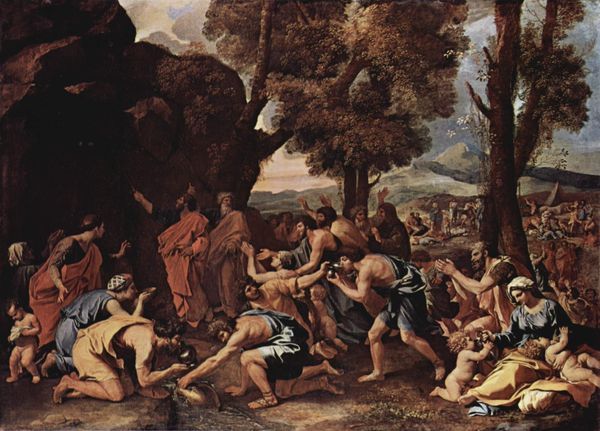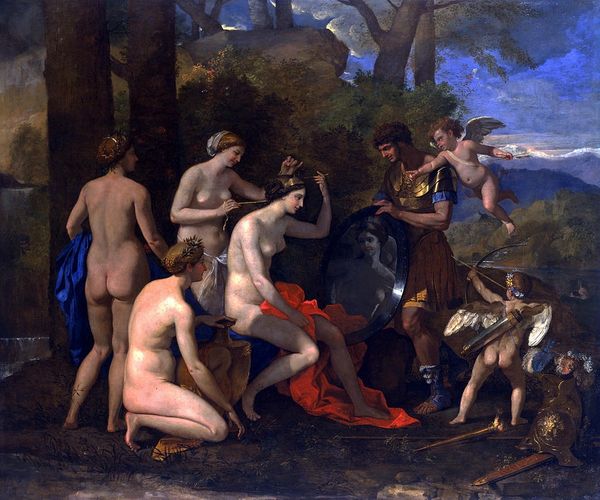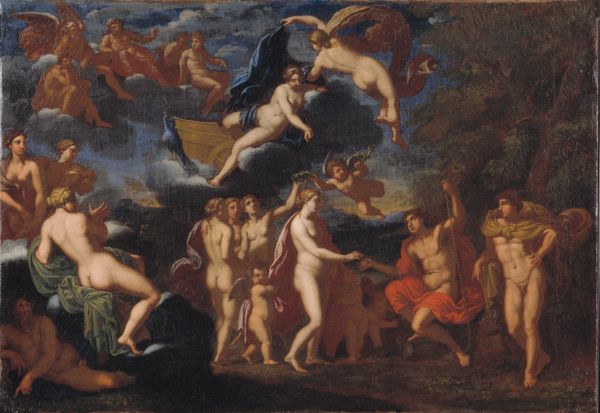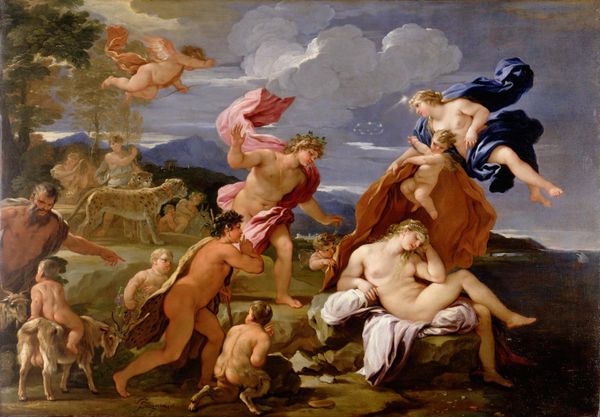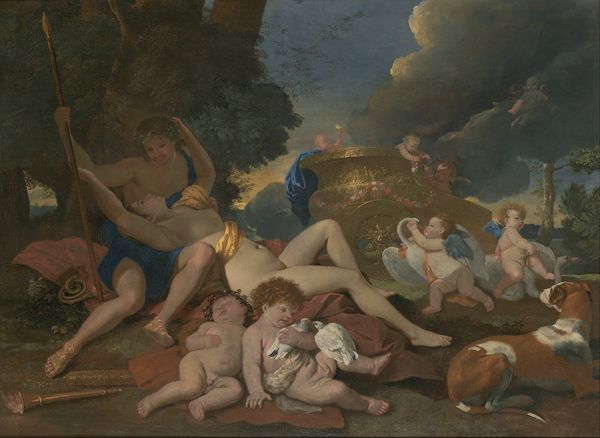
painting, oil-paint
#
allegory
#
baroque
#
painting
#
oil-paint
#
figuration
#
oil painting
#
roman-mythology
#
mythology
#
history-painting
#
nude
Dimensions: 97 x 135 cm
Copyright: Public domain
Nicolas Poussin painted ‘Acis and Galatea’ in the mid-seventeenth century, presenting a classical myth in oil on canvas. The painting depicts a scene of idyllic love and eroticism, reflecting a broader cultural interest in classical themes during the Baroque period. Painted in Rome, the image evokes a sense of Arcadia, a nostalgic vision of pastoral life which had become fashionable among cultured elites. Poussin’s emphasis on idealized forms and balanced composition reflects the influence of classical art and the artistic doctrines of the French Academy, which promoted a style based on reason and order. However, the painting is not without its darker undertones, as it foreshadows the tragic fate of Acis, who will soon be killed by the jealous Polyphemus. This contrast between beauty and violence speaks to the complexities of human existence. The social conditions that shaped Poussin's artistic production were closely linked to the patronage of wealthy collectors and institutions. To understand the artwork better, we can look at surviving letters and other archival documents that shed light on the artist's intentions.
Comments
No comments
Be the first to comment and join the conversation on the ultimate creative platform.

